The initial announcement of Star Trek: Discovery looked very promising. Unfortunately, the news has not been as good since then.
First of all, the first teaser showed some lackluster CGI effects, but I was willing to dismiss that as being evident of the show's early prouction. But then news kept getting worse. Bryan Fuller stepped down as the showrunner, CBS repeatedly stated that the show won't be an anthology (even though an anthology would be a great idea), and the show was delayed from January to March. Now it's been delayed again - this time indefinitely. The delays appear to be related with CBS's in ability to get its streaming service off the ground, delays in casting, and scheduling conflicts with those who have been cast.
But production has started, and the first teaser trailer has come out.
A behind the scenes teaser gives a look at uniforms, sets, possible ship redesigns, and the captain's chair.
The first thing that stood out to me is the tease of the new uniforms, which resemble a combination of the Star Trek: Enterprise uniforms, and the cadet uniforms from the rebooted Star Trek movies. But there's a huge flaw in this uniform: the breast badge is the delta shield. Since this is a prequel to the original series, this uniform is unlikely to belong to an Enterprise crew member, even though that delta shield was unique to the Enterprise in the original series.
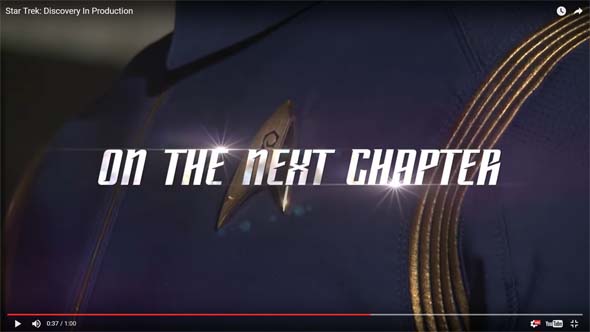
The Discovery teaser shows a delta shield badge on a pre-TOS uniform - which is a Star Trek faux pax.
In the Original Series, each ship, starbase, or installation had its own unique mission badges, similar to contemporary NASA missions. This was a detail that even Star Trek: Enterprise got right! But the Abrams reboot, and now the new Discovery series have broken with this detail, making the uniforms anachronistic within established series' canon.
Each ship, starbase, or installation in The Original Series had its own unique mission patch, inspired by NASA missions.
By the time of The Next Generation, Starfleet had adopted a single insignia for the use of its communicator badges, which was based on the Enterprise 1701's mission insignia. Of course, this badge was a piece of technology, rather than a simple patch on a shirt, so there could have been technical limitations that required the adoption of a single insignia.
UPDATE: FEBRUARY 10, 2017:
Since seeing the trailer and writing this post, it has come to my attention that I may have over-reacted to the insignia. The presence of this insignia may be a reference to the possibility that the lead character of the show is going to be the first officer from the original Star Trek pilot. This character was played by Majel Barrett (who later went on to protray Nurse Chapel), and this character was un-named, and was only called "Number One"). So this character would have previously served onboard the U.S.S. Enterprise with Captain Pike. Perhaps this insignia is on Captain Pike's uniform?
Either way, the fact that this insignia is still being used as the show's insignia bothers me, as the show is called "Star Trek: Discovery". The insignia for the show should be the Discovery's insignia, and the Discovery should have an insignia all its own. But this insignia is dangerously close to the original Enterprise's [More]
daf66755-c254-4474-af34-b9985da63c4e|1|5.0
Tags:Star Trek, Star Trek: Discovery, CBS, Paramount, Bryan Fuller, NASA, uniform, delta shield, mission patch, U.S.S. Discovery, anthology, Number One, Majel Barrett
In my reviews of The Force Awakens and Rogue One, I complained about how the speed of communications and hyperspace travel seems to have shrunk the Star Wars universe. I asserted that the writers seem to have no appreciation for the size and scale of this universe, or for galactic conflict. That observation severely hurt my enjoyment of both films. Star Wars has always flown lose with its science, but even though the original trilogy got a lot of details wrong (ahem, "parsec"!), there at least seemed to be an effort to respect some scientific believability. Even the prequels stayed fairly respectful to the size and scale of the universe and conflict. The new movies, by comparison, seem completely (and deliberately) scientifically illiterate.
Keep in mind that the following analysis is coming from someone with only minimal knowledge of the extended universe. I'm more of a Trekker than a Star Wars fan (a "Warser"?). I have tech manuals of the Enterprise and the star charts of the Federation, but no Star Destroyer tech manuals or Imeprial star charts. So my opinions come from the films alone. Besides, all those novels, video games, and comic books have been de-canonized by Disney anyway. If anyone more knowledgeable of the Star Wars extended universe wants to chip in with corroborating or conflicting information, feel free to do so in the comments. Thanks to Disney's meddling, such knowledge may now be moot.
And oh, by the way, it drives me nuts when Star Trek movies make these sorts of mistakes as well. I'm looking at you, Star Trek V and first episode of Enterprise!
Hyperspace originally analogous to contemporary air travel
Let's start by looking at a frame of reference: the trip in the Millenium Falcon in the first Star Wars movie. While the Millennium Falcon is in transit from Tatooine to Alderan, Luke has time to receive some rudimentary Jedi training from Obi Wan, Han calmly relaxes and socializes in the lounge, and Chewbacca has time for at least one game of space-chess against the droids. This hyperspace trip is presented as being analogous to cross-continental (or intercontinental) plane flight: at least enough time for passengers to unfasten their safety belts and wander around the cabin.
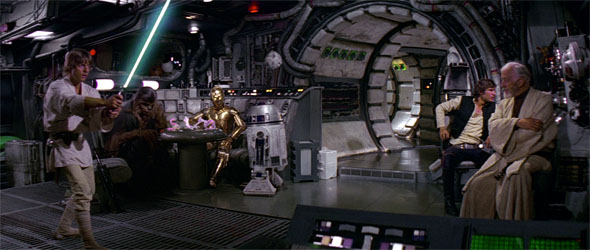
A hyperspace trip in the Millennium Falcon offers at least enough time for everyone to lounge about.
But an estimate of hours is on the low end of the spectrum of possibilities. As far as I can tell, there's nothing in the movie that negates the possibility of this trip to Alderaan taking days. That would certainly be plenty of time for Obi Wan to teach Luke enough of the basics of Force-sensitivity to enable his "lucky shot" in the climactic Death Star trench run. It would also give the characters enough time to socialize, converse and develop some sense of camaraderie with one another. It's also enough time for Leia to undergo at least a couple rounds of interrogation aboard the Death Star... [More]
26fb310b-edb8-4d45-99d9-16fdfa22b05a|2|5.0
Tags:Star Wars, Return of the Jedi, Star Wars: The Force Awakens, Rogue One: A Star Wars Story, hyperspace, faster than light, space, travel, distance, Tatooine, Alderaan, Endor, Battle of Endor, Scarif, Battle of Scarif, Millennium Falcon, airplane, World War II, Pearl Harbor, aircraft carrier
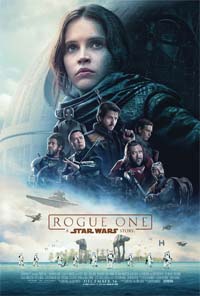
I don't think that Disney's writers take Star Wars' universe very seriously. I'm not talking about story or continuity; I'm talking about the actual, physical space in which the stories take place. They've created a major problem. It's the same problem that frustrated me about The Force Awakens: there is no sense of scale to this universe anymore. I was really hoping that it was just J.J. Abrams and his writing crew being lazy in Force Awakens because his Star Trek movies suffered from the same problem. I had hoped that a new writing crew would improve the material (just like Star Trek Beyond fixed another of my biggest complaints about the reboots of that franchise after J.J. left the helm). But that laziness seems to not only be contagious, but has actually gotten worse in Rogue One. This movie takes something that was only a nagging annoyance in Force Awakens, and blows it up to almost movie-breaking proportions.
In the original Star Wars movies, the time-frames for hyperspace travel was always ambiguous. There were cuts between scenes, and the amount of time that it took for ships to travel was left to the individual viewer's imagination. But now, we see interstellar travel and communications happen instantaneously, in real time! It happens when the fighter crashes on Eado, and the rebel base on Yavin immediately loses contact and sends a squad of fighters to assault the base. It happens again when Rogue One infiltrates the Imperial data warehouse on Scarif, a transmission is intercepted, and a rebel fleet immediately gets rerouted to the planet.
This isn't just bad science; it's also bad writing. The hyperdrive has become a narrative crutch. For the entire second half of the movie, I felt no tension at all because I knew that if the heroes ever got in a jam, a rebel fleet (or reinforcements) could just appear out of nowhere to save the day. This is a prequel, so I already knew how it was going to end. This lazy script contrivance (and all-around dull characters) also made the journey to get there completely uninteresting.
But it goes deeper. How far apart are these places? Is the entire galaxy that accessible?
Basic elements of the overarching Star Wars storyline just completely break down when travel and communication is instantaneous. There's no distinction between the tightly-controlled "core", and the supposedly-lawless "outter rim" planets if a whole fleet of Star Destroyers can literally FTL to any planet in a matter of seconds. There's no need for anyone to make a hard-copy of the Death Star plans to physically transport it if they can transmit the data instantly. And there's no point in pursuing or intercepting ships (such as Leia's Blockade Runner) if hyperspace travel takes the ship to its destination in a mere moment. The empire's holdings become completely indefensible if entire rebel fleets can appear out of nowhere with no warning. Their installations are publicly visible, but the rebels are hidden. The rebels know where all the imperial bases are, and there's nothing stopping them from just jumping to random bases and blowing them up with no recourse from the empire. This universe has lost the believable, lived-in quality and sense of breadth and variety that the original trilogy so expertly executed. The Star Wars universe is broken.
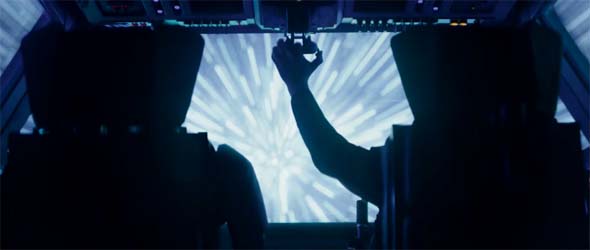
Rogue One shows us instantaneous communication and travel between planets in real time.
"Just turn off your brain and enjoy it", people tell me.
No. I won't turn off my brain. There is no reason why our movies can't be both entertaining and smartly-written. Why aren't we holding our movies to that standard anymore? It's not a tall bar. "Not as bad as the prequels" is not good enough, and I'm not going to pretend that it is when dealing with entries of a series that contains - not one - but two - landmark cinematic masterpieces.
Even if every new movie were as likable as The Force Awakens, these little missteps add up. Each new movie that comes out chips away at the integrity of the franchise (and universe) in which all the movies (including the good ones) exist. We can hand-wave away our complaints about the prequels, or we can ignore them entirely, but we're now at the point at which the original Star Wars trilogy is a minority of the Star Wars film franchise, and it's only getting more diluted. [More]
bed02b8d-cee1-484b-89cb-28dd57548f3e|1|5.0
Tags:Star Wars, Rogue One: A Star Wars Story, Disney, Lucasfilm, prequel, war, espionage, Death Star, Star Destroyer, space, galaxy, faster than light, hyperspace, Grand Moff Tarkin, Darth Vader, uncanny valley, Felicity Jones

I did it again. I waited until the last minute to see a hard science fiction film until it was just about to leave theaters, even though I complain about the conventional Hollywood logic that hard science fiction doesn't sell tickets. In my defense though, I was preparing for a trip out of the country when this movie released. So my excuse this time is far better than my excuse for missing opening weekend of The Martian. And once again, this film's 94% on Rotten Tomatoes (as of the time of this writing) and its exceeding box office projections (coming in third behind a Marvel comic book movie and a children's movie) seems to vindicate that Hollywood can still make high-concept, hard science fiction films, that people will go see them, that people will understand them, and that those people will like them.
Arrival is as hard as hard science fiction gets. Think Contact; think 2001: A Space Odyssey; think the Star Trek TNG episode "Darmok". Arrival is all about communication, and it offers an interesting exploration of how language influences the way that we think, and how our thoughts are filtered through the language that we speak. The entire movie is about the efforts to communicate with the aliens, while human beings progressively become incapable of actually communicating with one another. There's no real villain, exactly one explosion, and the threat of China and Russia starting a war with the aliens on the other side of the globe is a distant, but tangible threat. This film is slow and methodical, much like the efforts to teach a new language to someone, and it makes absolutely sure that the audience will be able to follow along with what is going on.
Moreso than our attempts to communicate with aliens, this film is about our ability (or inability) to communicate with each other - at every level of society. From individual relationships, to professional relationships, to political relationships, to international diplomatic relationships, and even the relationship between the media and the public.
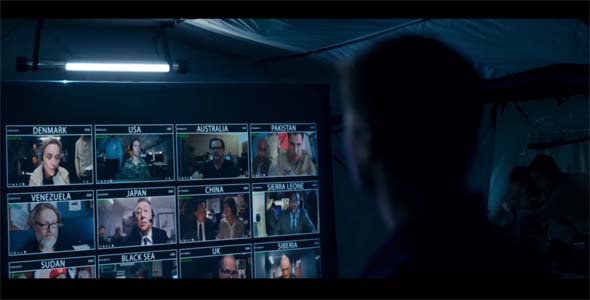
Arrival is more about our inability to communicate with each other, than our inability to communicate with aliens.
It's difficult for me to say anything more about this movie without absolutely, completely spoiling everything. Suffice to say, the high-concept science fiction stuff is very well handled. This movie earns some comparisons to Interstellar, but is far more intelligent and manages to not be hokey at all. Read on if you want spoilers... [More]
023940cc-6fc7-4a26-a273-727d7283c24d|0|.0
Tags:Arrival, Amy Adams, Jeremy Renner, science fiction, grief, extraterrestrial, language, communication, relationships, Slaughterhouse-Five, Kurt Vonnegut, time travel, box office, Hollywood
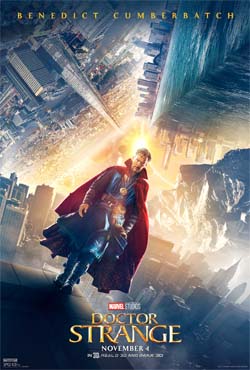
When I reviewed Captain America: Civil War, I said that "the Marvel cinematic universe may be starting to collapse under its own weight". I probably should have said that "it's starting to buckle under its own weight", since Marvel is still a ways off from anything that resembles collapse. That movie also got better upon repeat viewings, but I feel much the same about the recently-released Doctor Strange. In much the same way that I had suspected that Suicide Squad must have taken place years (or decades) prior to Dawn of Justice, I had also assumed that Doctor Strange must have occurred (at least partly) prior to the events of the first Avengers movie.
The story of Doctor Strange is, after all, essentially a Doubting Thomas story. That would be fine if Doctor Strange were a stand-alone movie, but a Doubting Thomas story is a really difficult thing to buy into within the Marvel cinematic universe. By the beginning of the movie, Stephen Strange (who lives in New York) must surely be aware of (and possibly have first-hand experience with) superhumans since the events of the first Avengers movie. In a world in which the literal Norse God of Thunder Thor has descended from the mystical plane of Asgard, to team up with a gamma-powered Hulk and a super soldier frozen since World War II, to defend New York from an inter-dimensional alien invasion, can you really be all that skeptical of astral projection, alternate dimensions, or even blatant magic?
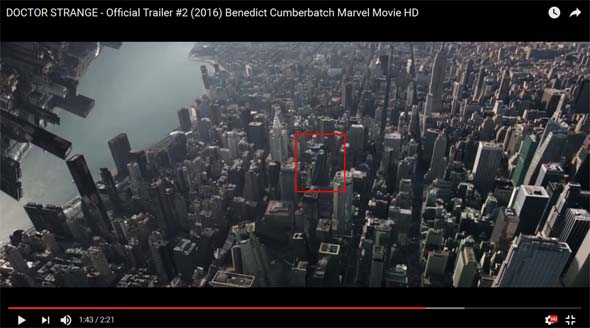
Avengers Tower is clearly visible.
If Doctor Strange's car accident and physical therapy took place long before the events of the first Avengers, then this skepticism would be excusable. If Strange spent years at Kamar Taj learning magic, while oblivious to the events of the Avengers movies, Winter Soldier, and Civil War, then that would be a satisfactory explanation for his ignorance. But I don't think that's the case. Doctor Strange was tight-lipped when it came to references to the other Marvel movies (potentially for this very reason), but Avengers Tower still shows up in the skyline, and I'm pretty sure there were references to the other super heroes in the first half of the movie. In fact, I'm pretty sure that Strange gets a phone call asking if he'd be willing to treat an Air Force colonel who broke his spine in experimental armor. This must surely be a reference to Rhodes' accident in Civil War.
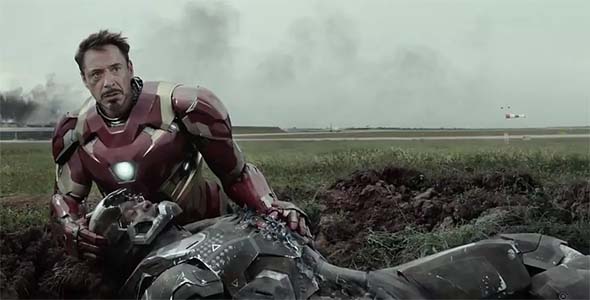
Strange is asked if he'd be willing to treat Colonel Rhodes after injuries sustained in Civil War.
Maybe I'm being nitpicky, but buy-in is important in fantastical movies like this. But it's hard to buy into Stephen Strange, and it certainly doesn't help that he's an abrasive ass hole and isn't very likeable at the start of the movie... [More]
7b5a775b-343d-4ac0-af0a-45a9d6cbff14|0|.0
Tags:Doctor Strange, Marvel, Marvel Comics, Mordo, Kaecilius, the Ancient One, Dormammu, magic, Kamar Taj, astral projection, mysticism, skepticism, Doubting Thomas, Benedict Cumberbatch, Mads Mikkelsen, Avengers
|

| 12 | | | | | | | 60 | | 11 | | | | | | | 55 | | 10 | | | | | | | 50 | | 09 | | | | | | | 45 | | 08 | | | | | | | 40 | | 07 | | | | | | | 35 | | 06 | | | | | | | 30 | | 05 | | | | | | | 25 | | 04 | | | | | | | 20 | | 03 | | | | | | | 15 | | 02 | | | | | | | 10 | | 01 | | | | | | | 05 |
|